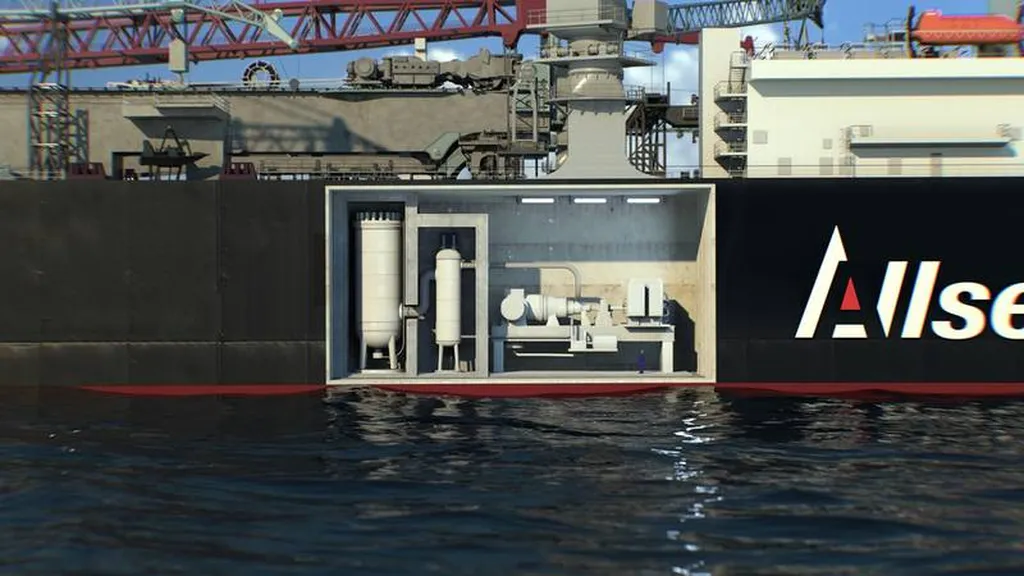Allseas is doubling down on its bet on small modular reactors (SMRs) with a five-year plan to deploy them on offshore vessels and onshore sites, targeting operations by 2030. The company’s 25 MWe/70 MWt reactor, based on high-temperature gas-cooled reactor (HTGR) technology, is being developed in collaboration with NRG PALLAS, TU Delft, and other partners. This move reinforces Allseas’ commitment to a future where clean, reliable energy powers everything from maritime operations to industrial sites.
The versatility of Allseas’ SMR technology is a game-changer. Its compact, intrinsically safe, and scalable design makes it suitable for a wide range of applications—from offshore operations and commercial shipping to port areas, chemical clusters, steel plants, refineries, and data centers. The technology also provides an autonomous, resilient energy supply for defense-critical infrastructure, supporting the decarbonization of existing industries and laying the foundation for future growth sectors like semiconductors, AI, quantum technology, and supercomputing.
Roland Berger estimates the potential for deploying up to 110 Allseas SMRs on land in the Netherlands and 700 across the global maritime sector, generating substantial economic value and CO2 reduction. The economic impact for the Netherlands alone could be monumental, with Allseas’ SMRs contributing up to €130 billion to the Dutch economy by 2050. This includes direct investments by Allseas and its value chain, as well as indirect growth in Dutch industry and maritime sectors. The technology could help retain 10,000–15,000 jobs and create 35,000–40,000 new skilled positions, providing a significant boost to the economy.
One of the standout benefits of Allseas’ SMR technology is its ability to tackle grid congestion. By generating energy directly at the point of use, the SMR reduces strain on the national electricity grid. This autonomous energy supply frees up grid capacity, allowing existing businesses to expand and making the Netherlands more attractive to new enterprises. According to the study, this could unlock €40 billion in additional economic value and save up to €12 billion in high-voltage grid investments—a significant portion of the €104 billion planned through to 2050.
The technology also strengthens energy security. Allseas’ reactor delivers clean electricity at prices competitive with fossil and renewable alternatives. It also supplies industrial heat up to 650°C, 30% cheaper than gas turbines and 80% cheaper than renewable heat sources. Combined with continuous, on-site energy availability, this significantly strengthens the energy security of Dutch industry.
In terms of decarbonization, Allseas’ SMR technology enables significant CO2 reductions—up to 25% (10 megatons annually) in Dutch industry and up to 5% (55 megatons annually) in the global maritime sector by 2050. Together, this equals the annual emissions of 3.5 million Dutch homes. “This study demonstrates our small modular reactor is technologically innovative and strategically valuable for the Netherlands,” said Stephanie Heerema, Project Manager Nuclear Developments at Allseas. “With this technology, we can meet the urgent demand for stable, clean, and affordable energy, while creating an export product that accelerates the global energy transition.”
Allseas commissioned a specialized study to map out the concrete impact of SMRs, carried out by Roland Berger, an international strategic consultancy with expertise in innovation and economic analysis. The study was validated with leading knowledge institutions, energy experts, and market players, including TNO, COVRA, Urenco, and the Port of Rotterdam. The results provide a factual foundation for the further development of nuclear technology within Allseas.
As a responsible family-owned company, Allseas always takes a long-term view. The conclusions of this study show exciting potential for their technology to address today’s challenges and strengthen their commitment to executing their five-year plan. “As a responsible family-owned company, we always take a long-term view. The conclusions of this study show exciting potential for our technology to address today’s challenges and strengthen our commitment to executing our five-year plan,” added Stephanie Heerema.

